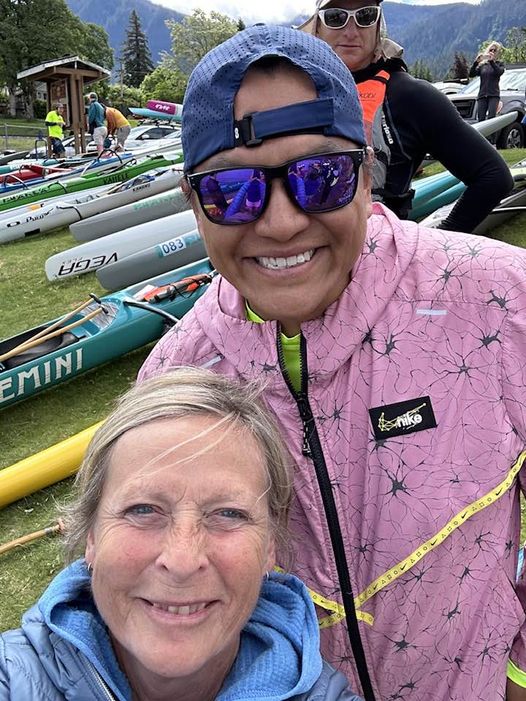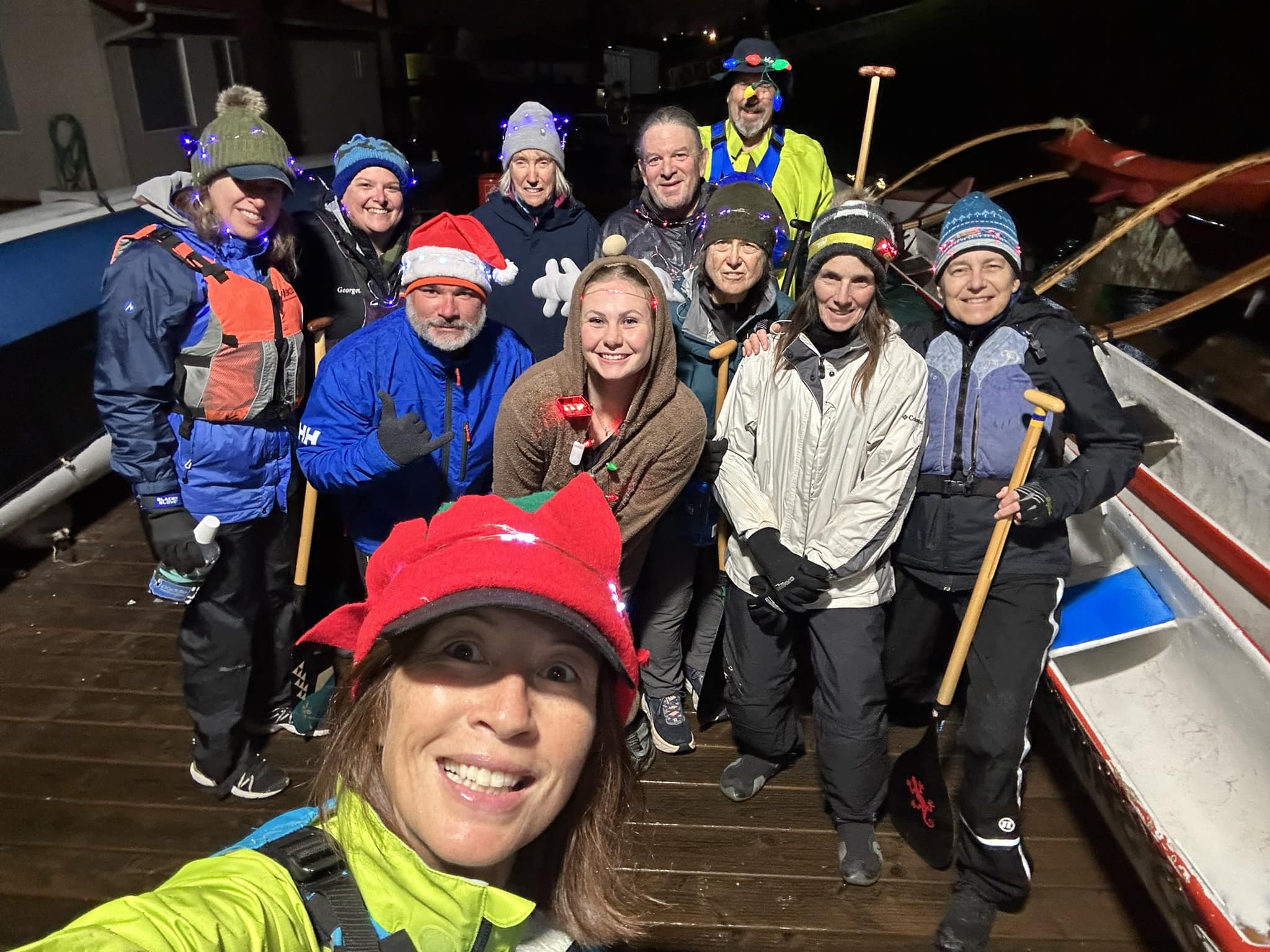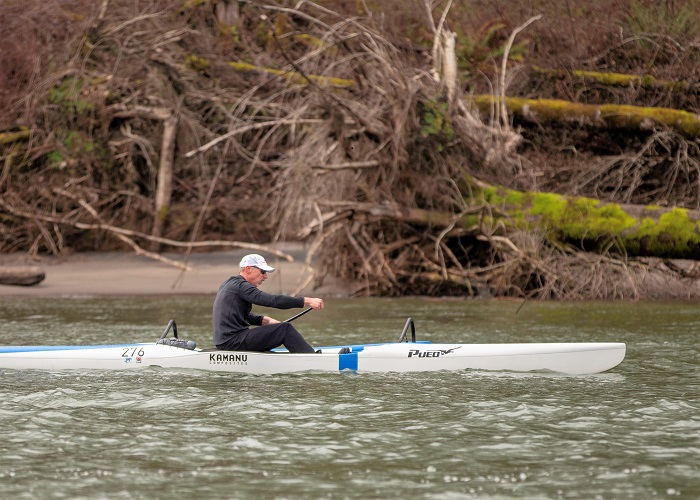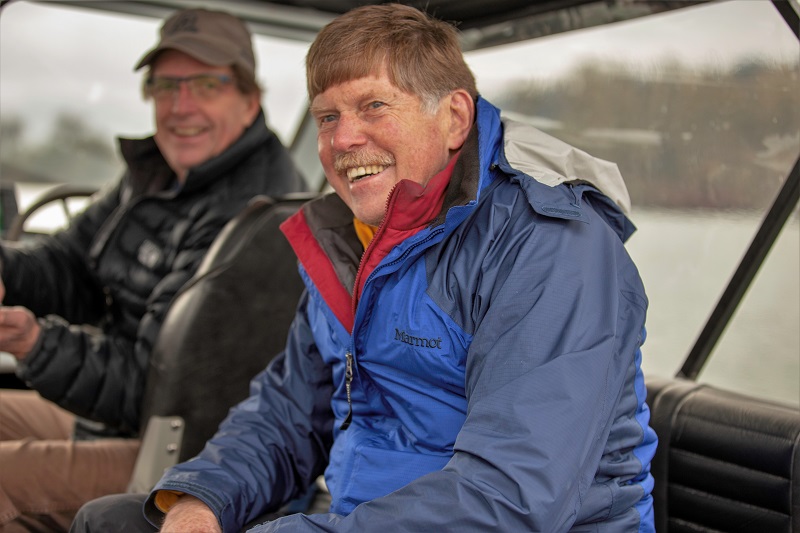General Practice Information
Facilities.
Our boathouse has space to store small personal items during practice, as well as a small changing room. Restrooms are available west of the west ramp. You may also use them for changing, filling up your water bottle, or showering after a practice.
west of the west ramp. You may also use them for changing, filling up your water bottle, or showering after a practice.
Preparation.
Before arriving at the dock, please fill out both online waivers. When you arrive to the dock, please introduce yourself as a guest to any member or a coach and they should help direct you to where you can stash your personal items, find a paddle or pfd if you need them, and show you which crew with whom you will paddle. To prepare for practice, members will be launching the canoes (OC6) in the water and then everyone will gather in a circle to receive guidance from the coaches.
Dress.
Prepare for any Northwest weather! During cold, wet Oregon winters, dress in layers for wind, rain, and cold. Start warm; you'll heat up while paddling. We suggest technical (polyester-type) or wool base layers, avoiding water-absorbing cotton. Wear water and wind-resistant outer layers. Expect upper body wetness, potentially full body in rain. Neoprene gloves keep hands warm. Use neoprene booties or old athletic shoes with wool socks and bring extra dry clothes. In warmer weather, shorts, tank tops, and sandals are suitable. Some go barefoot in canoes, as is tradition.
Hydration.
Carrying your own water is essential. A water bottle works or hydration packs work for most practices. On longer Saturday paddles, you may want to bring along a power bar or some other quick nutrition.
you may want to bring along a power bar or some other quick nutrition.
PFDs.
The U.S. Coast Guard requires our canoes to carry a personal flotation device (PFD, or life vest) for each person in the boat. Mountain Home does not require all paddlers to wear a PFD, but recommends them in dangerous conditions, for someone who is inexperienced at swimming, and during the winter months. Mountain Home has basic PFDs that are loaded in the canoes, and also has a few more comfortable vests for guests to borrow. First time guests are required to wear a PFD for safety.
Paddles.
Mountain Home has guest paddles available for your use. There are many ways to size a paddle. Ask a club member to help you pick one out. Once you’ve fallen in love with this sport, it would be wise for you to purchase one of your own. Ask a coach or other experienced paddler for their ideas on how to select one. You may even ask to try out different paddles that members own just to see how the different styles and lengths fit you.
Positions in the Boat.
There are 6 paddlers in each OC6 canoe. Seat 1 and 2 (front of the boat) are the strokers. Seat 1's primary job is staying consistent, yet being able to adjust when the crew needs something different. Seat 2 works with Seat 1 to keep the momentum of the stroke and the rhythm dynamic between the two. Seat 3 usually calls the switches and runs the boat, letting the crew know what is needed to push, power, change tempo, relax, and calls encouragement throughout the race. Seat 4 and 5 are the power seats. Seat 4 watches the ama and seat 5 helps the steersperson who is seat 6.
yet being able to adjust when the crew needs something different. Seat 2 works with Seat 1 to keep the momentum of the stroke and the rhythm dynamic between the two. Seat 3 usually calls the switches and runs the boat, letting the crew know what is needed to push, power, change tempo, relax, and calls encouragement throughout the race. Seat 4 and 5 are the power seats. Seat 4 watches the ama and seat 5 helps the steersperson who is seat 6.
Steering.
An experienced steersperson takes years to develop an individual language to their steering that makes a crew who they are. We recommend all paddlers try steering to better understand the water, current, balance, and surfing to catch waves. Paddlers within the crew that understand the water through steering will be a benefit to the steersperson in all types of water, from a quiet river to even the most difficult of ocean situations.
Switches.
Every other seat paddles on the opposite side of the boat for even power – so all odd seats paddle on one side while all even seat numbers paddle on the other side. Every 12-15 strokes, the caller yells, “hike” – seat 2 will hell "hut" as everyone takes one more stroke and then switches paddling sides from right to left or left to right, maintaining the cadence of the stroke. If you are new to outrigger paddling – ask someone to give you a quick primer on how to switch – there are a couple of tricks that make it a bit easier. You will appreciate switching sides as it conserves energy and allows for equal development of both sides of your body. You may find that you favor one side over another but that will pass – the goal is to feel equally comfortable on either side.
numbers paddle on the other side. Every 12-15 strokes, the caller yells, “hike” – seat 2 will hell "hut" as everyone takes one more stroke and then switches paddling sides from right to left or left to right, maintaining the cadence of the stroke. If you are new to outrigger paddling – ask someone to give you a quick primer on how to switch – there are a couple of tricks that make it a bit easier. You will appreciate switching sides as it conserves energy and allows for equal development of both sides of your body. You may find that you favor one side over another but that will pass – the goal is to feel equally comfortable on either side.
After the Practice.
Paddling may seem simple, but it's a multifaceted sport with a challenging learning curve. Your initial experiences might be confusing and even frustrating, leaving you tired and sore as you work muscles in new ways. Remember to be patient with yourself and don't hesitate to ask questions. We're here to support your paddling journey. Outrigger paddling, rich in culture and history, is incredibly rewarding as you improve. It offers a fantastic full-body workout and a social atmosphere where you'll meet great people. Stick with it; the fun side of paddling awaits you, and we hope to see you returning for more.
Hope to see you on the water soon!